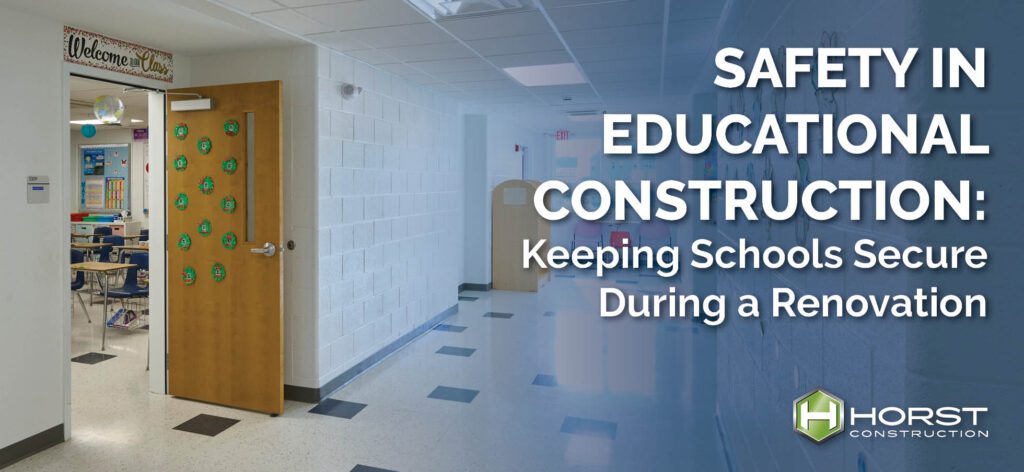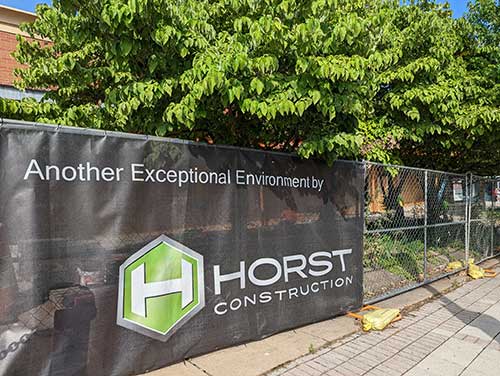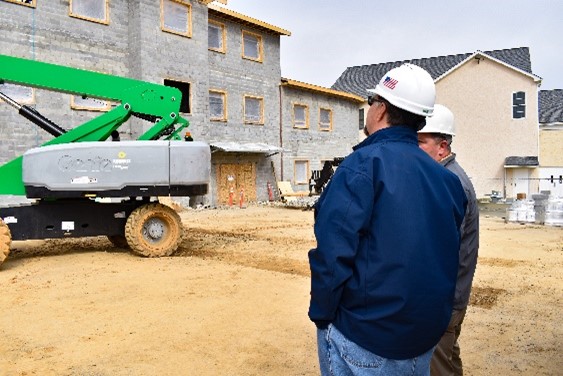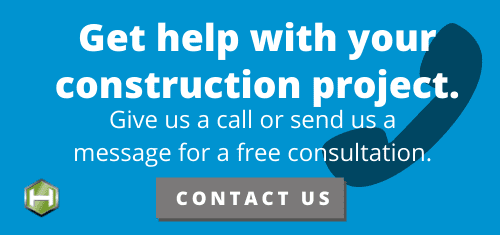
When building in an occupied school, safety is paramount.
There are several things your construction team should do to ensure risk and disruptions are minimized. While specifics will vary by school and project scope, here are eight steps your construction team should take to ensure everyone stays safe.
Assemble a Responsible and Experienced Team
A safe construction environment starts with a safe team. Many new people will have access to the building or adjacent areas, and stringent guidelines must ensure those coming and going are qualified to work around students.
Background Checks
Many states’ school codes mandate state and federal background checks for all contractors. In Pennsylvania, schools can require background checks whether those contractors interact with students or not. Whether the project happens alongside students or during summer break, it’s imperative to ensure those granted access to the site are qualified to be there.
At Horst, we conduct annual state and federal background checks on our teammates to ensure we can work safely on your site.
Committed Subcontractors
When you’re choosing a firm to lead the construction project, you’re likely focused on how committed to safety they are. But the buck doesn’t stop here. While the general contractor is responsible for managing job site safety, the subcontractors that work for them also have a role to play. Subcontractor selection needs to go beyond the lowest price. You need a team of contractors who also emphasize safety and doing things the right way.
Assessing Site-Specific Hazards
Each project has its challenges, and a truly safe project accounts for these at the beginning. Your construction team should assess the specific safety hazards and develop a plan for how to prevent and mitigate issues. Consider things like dust, fumes, equipment and material staging, traffic flow, temperature control, abatement procedures, and more.
It’s also important to create an emergency response plan. Consider how construction activities may interfere with any existing procedures, and create other plans as needed. This would include key contacts, shelter-in-place areas, and evacuation routes should a human-caused or natural disaster occur.
Close Off Construction Areas
 For the safety of students, staff, and construction personnel alike, your team should mark off construction zones. Barriers, doors, fences, and gates should physically designate boundaries and keep out anyone who shouldn’t be there. Signage, cones, and other wayfinding equipment should communicate how to safely get around and avoid off-limit areas. Create these with everyone in mind, from students familiar with the building to guests entering for the first time.
For the safety of students, staff, and construction personnel alike, your team should mark off construction zones. Barriers, doors, fences, and gates should physically designate boundaries and keep out anyone who shouldn’t be there. Signage, cones, and other wayfinding equipment should communicate how to safely get around and avoid off-limit areas. Create these with everyone in mind, from students familiar with the building to guests entering for the first time.
It’s also helpful to reduce the need for construction personnel to go beyond the confines of the project. This includes temporary bathrooms/port-a-potties, separate entrances and exits, and more.
Creating a sign-in station where everyone must log their names before entering the site helps keep track of who is where. ID badges can also create a layer of security, allowing you to quickly recognize who should be on site and who shouldn’t. Cameras can be another effective way to monitor entrances and exits.
Explore Project Phasing & Utilize Temporary Buildings
Depending on the scope of your changes, it may be beneficial to break the project into two or more phases. This can reduce the impact construction has on school operations by limiting how much of the school is closed for construction at once.
You may also be able to utilize temporary buildings or trailers as classrooms while other areas are renovated. This not only keeps students away from potentially distracting construction activities, but it provides a safe and comfortable learning environment as well.
Conduct Regular Inspections
 After the construction team lays out an effective, site-specific safety plan, it’s now time to ensure everyone sticks to that plan.
After the construction team lays out an effective, site-specific safety plan, it’s now time to ensure everyone sticks to that plan.
Regular safety inspections, conducted by project management and/or a designated safety teammate, should give leadership a sense of how workers are complying with the safety regulations put in place. They’ll also give useful insight into how it’s playing out in real life, allowing teams to readjust and improve the plan as the project progresses.
Control Noise, Dust, and Other Contaminants
People aren’t the only things you need to worry about venturing beyond the construction barriers. Several, much more infiltrative things may slip through if proper precautions aren’t taken.
Noise
Anyone who works in education knows how challenging it can be to get distracted students through a lesson. Construction noise can be a major disrupting factor to people’s attention spans regardless of age. Your construction team should be conscious of this, balancing project productivity with maintaining an environment conducive to learning. This could look like saving loud and disruptive tasks for off-hours, lunchtime, recesses, or holidays.
Dust
Depending on the scope of your project, construction can kick up a lot of dust and dirt. To keep that from spreading into non-construction zones, barriers, tarps, and other methods can be employed to ensure a clean educational space.
Manage Foot and Vehicle Traffic
From construction equipment to deliveries to workers coming and going, there’s often a lot of additional traffic related to a project. Ensuring it flows smoothly and doesn’t disrupt school traffic takes planning and constant communication.
This can include blackout times for morning drop-off and afternoon pickup times, or alternate routes for construction-related traffic. The team should communicate the details in a logistics plan. Be sure it considers your school’s holiday and activity calendar so things go smoothly even during off-hours and weekends.
Communicate Across the Board
All these steps culminate in one thing: excellent communication between everyone involved. The construction team should regularly communicate how the project is progressing, along with current and future activities. You should also relay the school’s activities and needs to the construction team. Additionally, create a plan to keep staff, students, and parents updated on the project as it progresses.
Social media, emails, and newsletters make doing this easier than ever. If you’re looking to raise funds for the project, this type of regular project update communication can be an effective way to do that.
At Horst Construction, we’re eager to help you update your school safely and efficiently. From constant communication to our unwavering commitment to safety, we have the experience to make your school construction project successful.



